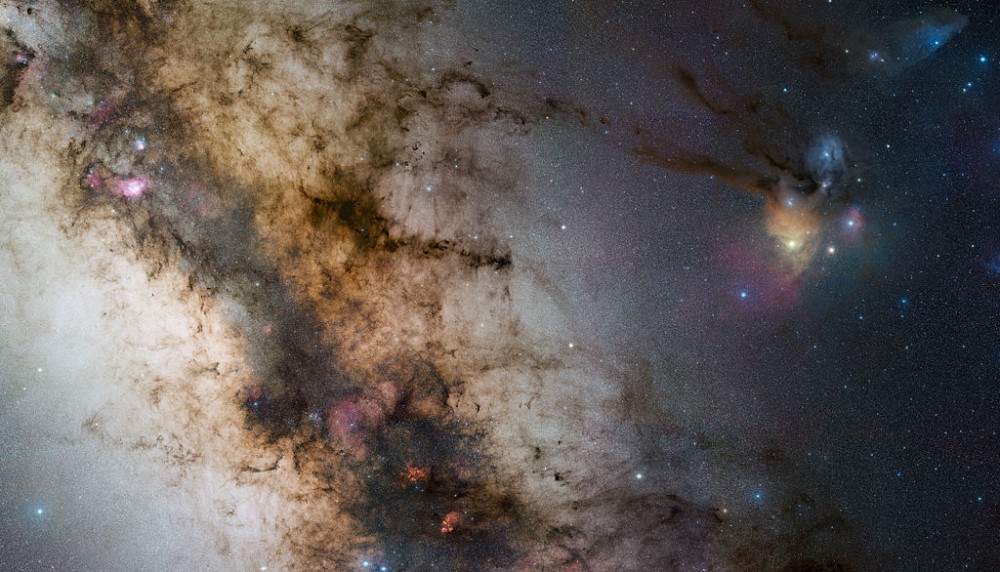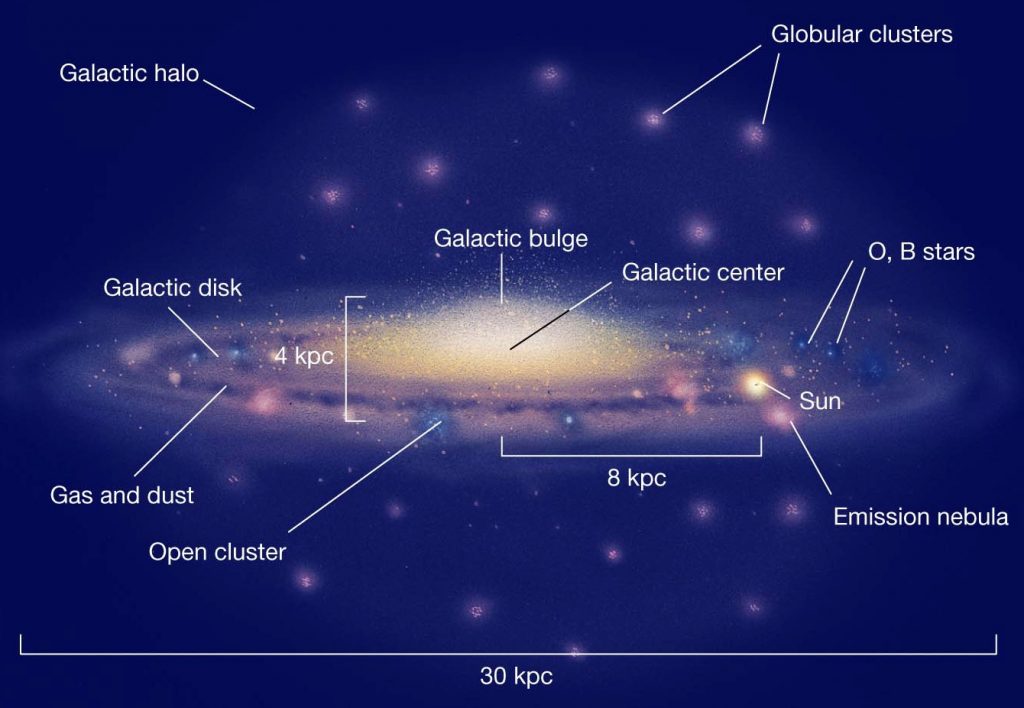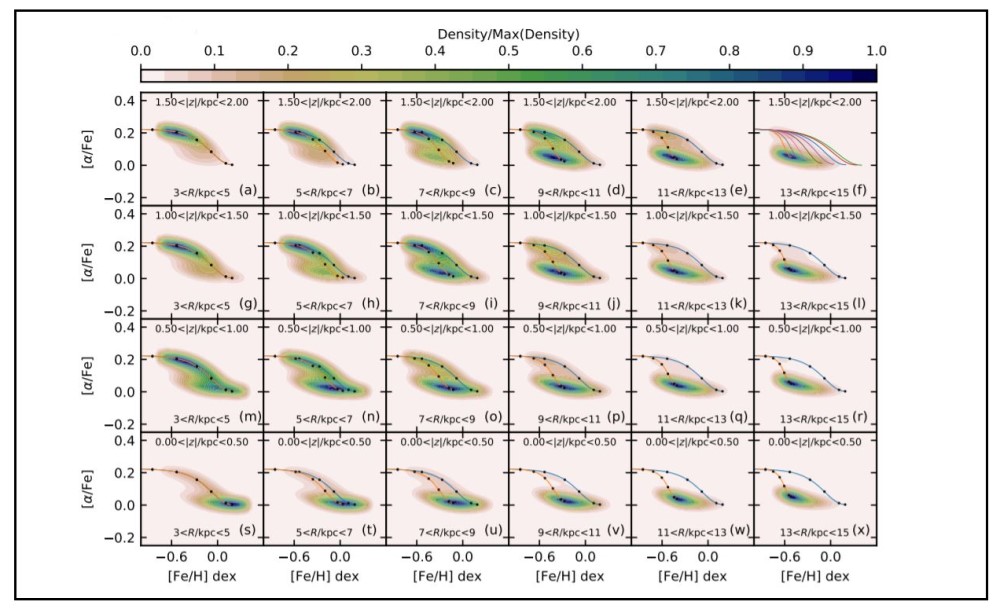Galactic Archaeology and Modeling the Milky Way
Researchers have created a model of the evolution of the Milky Way which explains how key chemical distributions in the galaxy’s stars came to be.
One of the biggest questions in astronomy is related to how our home galaxy, the Milky Way, came to be in its current state. Whilst this might seem like it is a fairly straightforward set of answers, a long history of mergers, collisions and galactic cannibalism require consideration.
This history spreads over the deep time, edging back billions of years – so it’s a little harder for us to look back and observe these events occurring, as we can for galaxies at far greater distances. However, astronomers do have a card up their sleeve – and it lies in the stars a little closer to home.
By reviewing two aspects of stars in our local region – firstly, their chemical signature as observed through their spectra, and secondly, their dynamical movement (i.e. the shape, speed and direction of their orbit), astronomers can start to piece together pieces of this historical puzzle.

These days, these studies are performed on grand scales using tools like the Gaia satellite which surveys billions of stars or the Australian-led GALAH spectroscopic survey, which also accounts for hundreds of thousands of stellar spectra. This newfound flood of data and knowledge has triggered a revolution in the understanding of our own galaxy.
Now, a new research paper published in the Monthly Notices of the Royal Astronomical Society outlines how a group of astronomers have brought us one step closer to understanding the evolution of the Milky Way.
These researchers, all from the University of Sydney and the ARC Centre of Excellence for All-Sky Astrophysics in Three Dimensions (ASTRO-3D), have created a chemodynamical model which reproduces the distribution of stars with different chemical compositions throughout the galaxy.
The authors, in their paper, state that the creation of this model was possible due to new observational data, including large-scale spectroscopic surveys such as GALAH, which earlier this year published its third data release.
THICK AND THIN DISKS

The Milky Way, like many observed spiral galaxies, is made up of several components, which include a thin disk and a thick disk. The thin disk contains the majority of the galaxy’s stars, and also includes gas and dust, making up the main galactic plane. This thin disk is also enveloped by a thick disk which is roughly three times thicker than the thin one and is almost exclusively made up of stars.
The stars that populate and define these disks are different in their chemical compositions. Two parameters are derived to determine the main chemical ratios that are used to define some of the details relating to thick and thin disks, which are denoted by the values [α/Fe] and [Fe/H].
The former, [α/Fe], describes the abundance of alpha elements within a star, which are created through the process of alpha capture. That is, elements that are formed through reactions with alpha particles (helium nuclei) in stellar nucleosynthesis. Thick disk stars have a higher [α/Fe].
On the other hand, [Fe/H] is the metallicity of a star, and describes its abundance of elements that are heavier than hydrogen and helium. These heavier elements are the result of the original composition of the star from the pre-formation nebula and boosted during the lifetime of the star as the star aged, through nuclear reactions in the core. [Fe/H] also varies systematically across the galaxy, and we see that with higher metallicity comes less distinction between the thick and thin disks.
MODELLING THE MILKY WAY

Previous models of galactic evolution have only partially addressed how the Milky Way has ended up with the thick and thin disks and its associated distributions of [α/Fe] and [Fe/H]. However, astronomers have reported that they have created a model which successfully explains these distributions.
Their model relies on the inclusion of radial migration, which relates to the migration of stars in or out from the galactic centre. They found that if radial migration is not included, then their model failed to produce both thick and thin disks. In including this mechanism, they successfully modelled the observed [α/Fe] and [Fe/H] distributions of the Milky Way.
The next steps for this model will be to continue using new data, such as that coming from GALAH and other surveys (both ground and space-based), to include analysis of more elements to build up a bigger picture of the Milky Way and its evolution.
Republished from SPACE AUSTRALIA
WRITTEN BY VANESSA CHAPMAN

